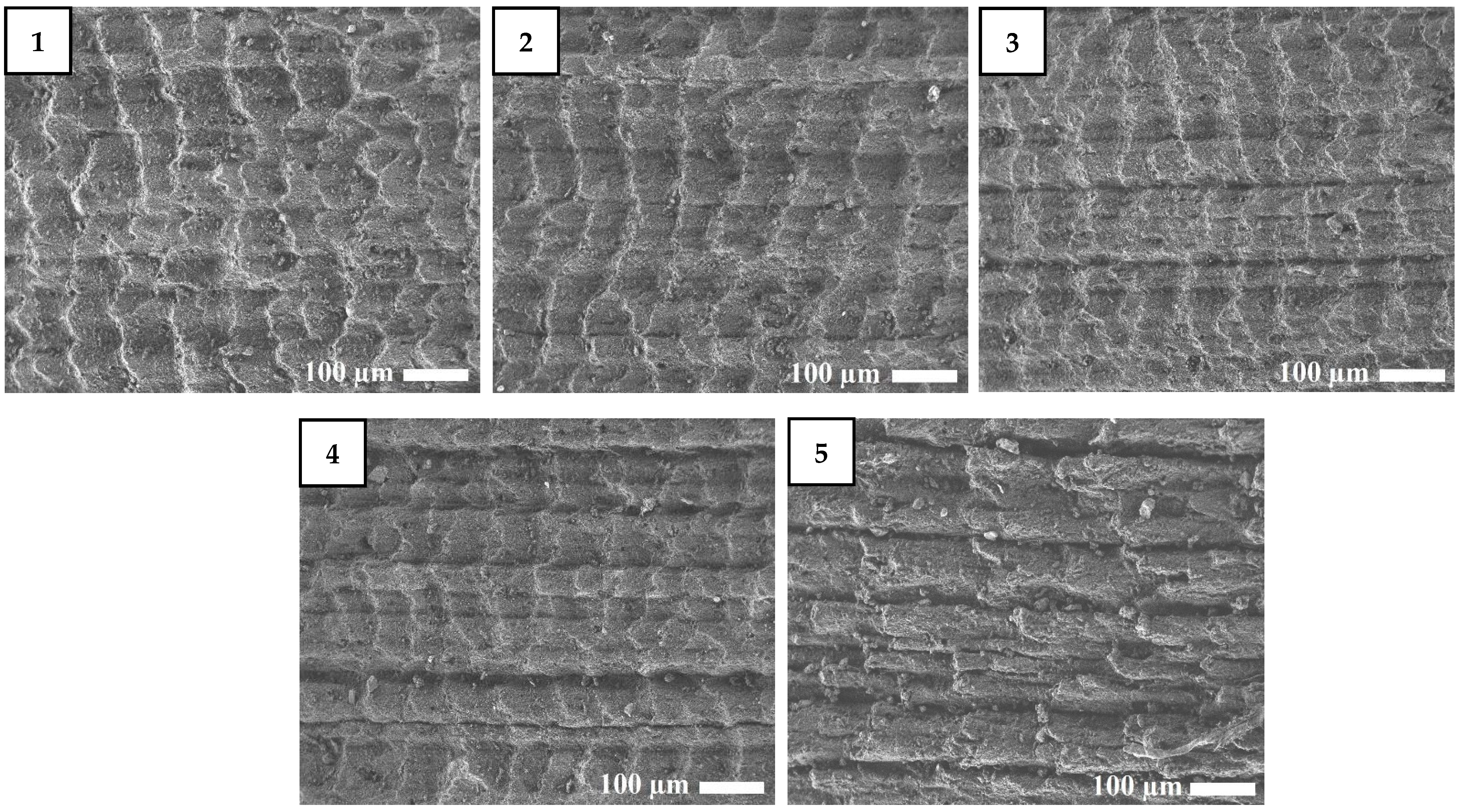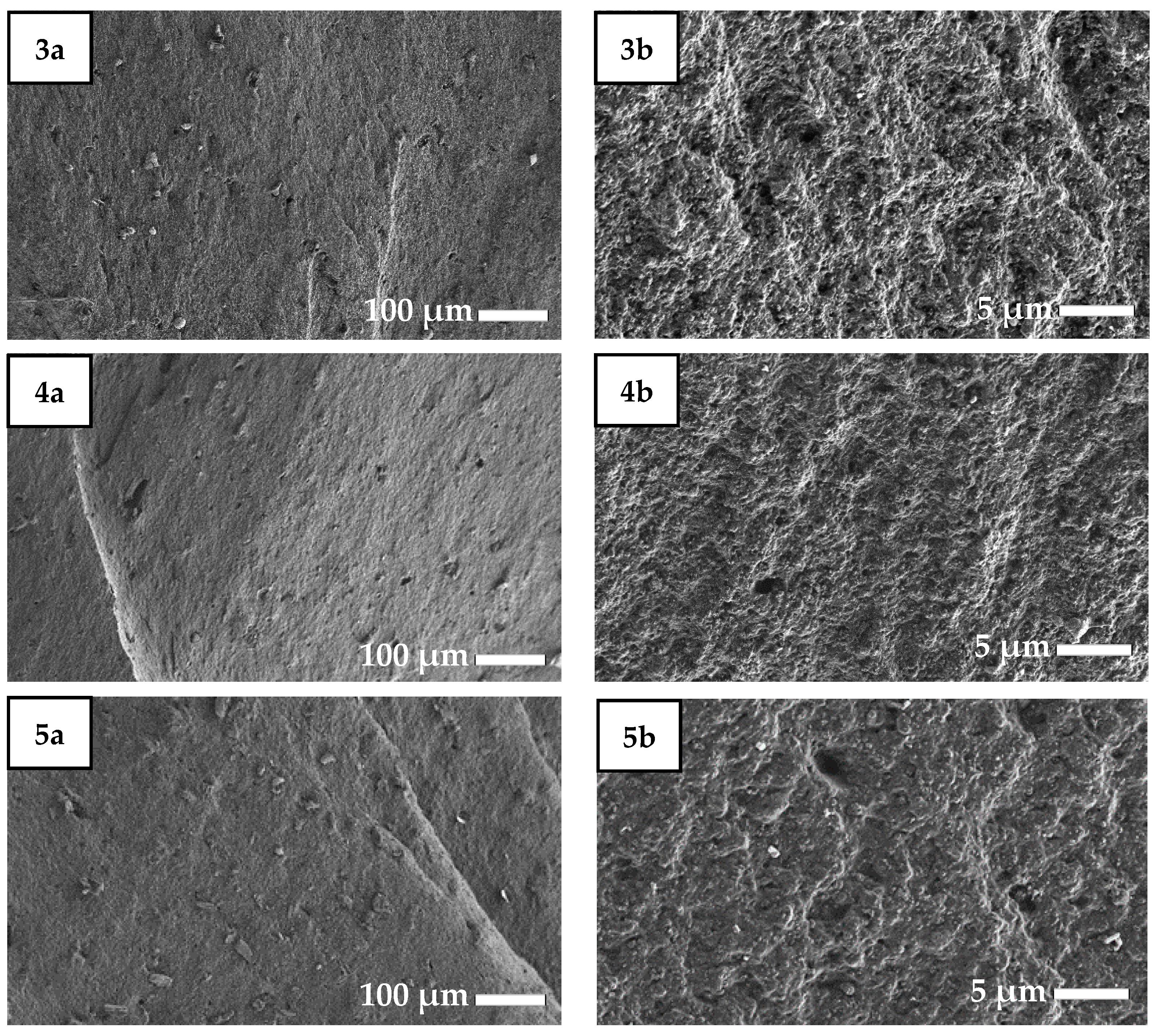Enhanced Physical and Mechanical Properties of Nitrile-Butadiene Rubber Composites with N-Cetylpyridinium Bromide-Carbon Black
Abstract
:1. Introduction
2. Results and Discussion
3. Materials and Methods
4. Conclusions
Author Contributions
Funding
Institutional Review Board Statement
Informed Consent Statement
Data Availability Statement
Conflicts of Interest
Sample Availability
References
- Klingender, R.C. Acrylonitrile Butadiene Rubber. In Specialty Elastomers; Klingender, R.C., Ed.; CRC Press: Boca Raton, FA, USA, 2008; pp. 39–92. ISBN 978-1-57444-676-0. [Google Scholar]
- Degrange, J.-M.; Thomine, M.; Kapsa, P.H.; Pelletier, J.M.; Chazeau, L.; Vigier, G.; Dudragne, G.; Guerbé, L. Influence of viscoelasticity on the tribological behaviour of carbon black filled nitrile rubber (NBR) for lip seal application. Wear 2005, 259, 684–692. [Google Scholar] [CrossRef]
- Papkov, V.N.; Yuryev, A.N. Butadiene nitrile rubbers. In Handbook of Rubber Technologist; Reznichenko, S.V., Morozov, Y.L., Eds.; Izdatelskii Tsentr “Tekhinform” MAI: Moscow, Russia, 2012; Volume 1, pp. 186–210. ISBN 978-5-89551-023-0. [Google Scholar]
- Laube, S.; Monthey, S.; Wang, M.-J. Compounding with carbon black and oil. In Rubber Technology: Compounding and Testing for Performance; Dick, J.S., Ed.; Hanser Publishers: Munich, Germany, 2001; pp. 297–343. ISBN 978-3446191860. [Google Scholar]
- Wu, Y.; Wen, S.; Shen, J.; Jiang, J.; Hu, S.; Zhang, L.; Liu, L. Improved dynamic properties of natural rubber filled with irradiation-modified carbon black. Radiat. Phys. Chem. 2015, 111, 91–97. [Google Scholar] [CrossRef]
- Park, S.-J.; Kim, J.-S. Role of Chemically Modified Carbon Black Surfaces in Enhancing Interfacial Adhesion between Carbon Black and Rubber in a Composite System. J. Colloid Interface Sci. 2000, 232, 311–316. [Google Scholar] [CrossRef] [PubMed]
- Akovali, G.; Ulkem, I. Some performance characteristics of plasma surface modified carbon black in the (SBR) matrix. Polymer 1999, 40, 7417–7422. [Google Scholar] [CrossRef]
- Shadrinov, N.V.; Kapitonov, E.A.; Sokolova, M.D.; Okhlopkova, A.A.; Shim, E.L.; Cho, J.-H. Effect of Carbon Black Activation on Physicomechanical Properties of Butadiene-nitrile Rubber. Bull. Korean Chem. Soc. 2014, 35, 2891–2894. [Google Scholar] [CrossRef] [Green Version]
- Gunewardena, J.; Anoma, G.S.G. Development and Evaluation of Dispersing Agents for Carbon Black Filled Natural Rubber Compounds. Ph.D. Thesis, Loughborough University, London, UK, 1999. [Google Scholar]
- Mahdi, M.S. Cationic Surfactants in Rubber Compounding. Ph.D. Thesis, Loughborough University, London, UK, 1984. [Google Scholar]
- Insarova, G.V. The Effect of Surfactants on the Processing of Rubber Compounds and Properties of Vulcanizates; TsNIITEneftekhim: Moscow, Russia, 1980; pp. 9–23. ISSN 0202-2788. [Google Scholar]
- Yamamoto, K.; Ikeda, K.; Fukuyama, M. Rubber Compositions for Sponge Rubber. U.S. Patent 5,462,975, 31 October 1995. [Google Scholar]
- Okhlopkova, T.A.; Borisova, R.V.; Nikiforov, L.A.; Spiridonov, A.M.; Okhlopkova, A.A.; Jeong, D.-Y.; Cho, J.-H. Supramolecular Structure and Mechanical Characteristics of Ultrahigh-Molecular-Weight Polyethylene–Inorganic Nanoparticle Nanocomposites. Bull. Korean Chem. Soc. 2016, 37, 439–444. [Google Scholar] [CrossRef]
- Contescu, C.I.; Burchell, D.I. Selection and Characterization of Carbon Black and Surfactants for Development of Small Scale Uranium Oxicarbide Kernels; ORNL: Oak Ridge, TN, USA, 2005; pp. 1–55. [Google Scholar]
- Richardson, S.M. The Adsorption of Mixed Surfactant Systems on Colloidal Carbon Black. Master’s Thesis, Queen’s University, Kingston, ON, Canada, 1997. [Google Scholar]
- Malkin, A.I. Regularities and Mechanisms of the Rehbinder’s Effect. Colloid J. 2012, 74, 223–238. [Google Scholar] [CrossRef]
- Borisov, V.I. The Mechanism of Action of Zn-Salts of Fatty Acids in the Vulcanization of Rubbers. Ph.D. Thesis, Moscow State University of Fine Chemical Technologies, Moscow, Russia, 1980. [Google Scholar]
- Karásek, L.; Sumita, M. Characterization of dispersion state of filler and polymer-filler interactions in rubber-carbon black composites. J. Mater. Sci. 1996, 31, 281–289. [Google Scholar]
- Donnet, J.-B.; Custodero, E. Reinforcement of Elastomers by Particulate Fillers. In Science and Technology of Rubber, 3rd ed.; Mark, E.J., Erman, B., Eirich, F.R., Eds.; Elsevier Academic Press: Burlington, ON, Canada, 2005; pp. 367–400. [Google Scholar]
- Muhr, A.H.; Roberts, A.D. Rubber abrasion and wear. Wear 1992, 158, 213–228. [Google Scholar] [CrossRef]
- El-Tayeb, N.S.M.; Nasir, R.M. Effect of soft carbon black on tribology of deproteinized and polyisoprene rubbers. Wear 2007, 262, 350–361. [Google Scholar] [CrossRef]
- Golubkova, G.V.; Lomovsky, O.I.; Vlasov, A.A.; Davliova, L.S.; Belyaev, E.Y.; Malakhov, V.V. Studies of X-ray amorphous phase in mechanochemical synthesis of iron silicides from elements. J. Alloys Compd. 2000, 307, 131–136. [Google Scholar] [CrossRef]
- Baikalova, Y.V.; Lomovsky, O.I. Solid state synthesis of tungsten carbide in an inert copper matrix. J. Alloys Compd. 2000, 297, 87–91. [Google Scholar] [CrossRef]
- Belyaev, E.; Mamylov, S.; Lomovsky, O. Mechanochemical synthesis and properties of thermoelectric material β-FeSi2. J. Mater. Sci. 2000, 35, 2029–2035. [Google Scholar] [CrossRef]
- Koshelev, F.F.; Kornev, A.E.; Bukanov, A.M. The General Technology of Rubber, 4th ed.; Khimiya: Moscow, Russia, 1978; pp. 72–76. [Google Scholar]
- GOST 270–84 State Standard, Rubber: Method of the Determination Elastic and Tensile Stress–Strain Properties. Available online: http://vsegost.com/Catalog/21/21850.shtml (accessed on 23 January 2020).
- GOST 9.030-74 State Standard, Unified System of Corrosion and Aging Protection—Vulcanized Rubbers: Method of Testing Resistance to Attack by Corrosive Media in Limp State. Available online: http://vsegost.com/Catalog/35/3586.shtml (accessed on 23 January 2020).




| Properties | 1 | 2 | 3 | 4 | 5 |
|---|---|---|---|---|---|
| Tmax (kPa) | 1627 | 2244 | 2362 | 2444 | 1436 |
| Tmin (kPa) | 310 | 302 | 305 | 302 | 263 |
| ΔT (kPa) | 1317 | 1942 | 2057 | 2142 | 1173 |
| t2 (min) | 0.68 | 0.32 | 0.28 | 0.26 | 0.76 |
| t90 (min) | 12.19 | 8.49 | 6.07 | 5.06 | 11.32 |
| t90 − t2 (min) | 11.51 | 8.17 | 5.79 | 4.80 | 10.56 |
| CRI (min−1) | 8.69 | 12.24 | 17.27 | 20.83 | 9.47 |
| fP (MPa) | 7.8 ± 0.5 | 17.5 ± 1.1 | 13.1 ± 0.8 | 11.4 ± 0.7 | 6.9 ± 0.4 |
| f100 (MPa) | 2.1 ± 0.1 | 4.9 ± 0.3 | 5.6 ± 0.3 | 5.1 ± 0.3 | 1.7 ± 0.1 |
| εp (%) | 464 ± 29 | 306 ± 20 | 227 ± 14 | 203 ± 13 | 495 ± 30 |
| Q (%) | 9.69 ± 0.30 | 8.97 ± 0.28 | 8.42 ± 0.26 | 8.87 ± 0.27 | 9.51 ± 0.30 |
| Shore A | 68 ± 2 | 78 ± 2 | 79 ± 2 | 80 ± 3 | 68 ± 1 |
| Compounds | 1 | 2 | 3 | 4 | 5 |
|---|---|---|---|---|---|
| BNKS-18 base rubber | 108 | 108 | 108 | 108 | 108 |
| Carbon black N550 | 50 | 45 | 40 | 35 | - |
| Activated carbon black N550 | - | - | - | - | 50 |
| CPB-modified-carbon black N550 (CPB-CB) | 0 | 5 | 10 | 15 | 0 |
Publisher’s Note: MDPI stays neutral with regard to jurisdictional claims in published maps and institutional affiliations. |
© 2021 by the authors. Licensee MDPI, Basel, Switzerland. This article is an open access article distributed under the terms and conditions of the Creative Commons Attribution (CC BY) license (http://creativecommons.org/licenses/by/4.0/).
Share and Cite
Kapitonov, E.A.; Petrova, N.N.; Mukhin, V.V.; Nikiforov, L.A.; Gogolev, V.D.; Shim, E.L.; Okhlopkova, A.A.; Cho, J.-H. Enhanced Physical and Mechanical Properties of Nitrile-Butadiene Rubber Composites with N-Cetylpyridinium Bromide-Carbon Black. Molecules 2021, 26, 805. https://doi.org/10.3390/molecules26040805
Kapitonov EA, Petrova NN, Mukhin VV, Nikiforov LA, Gogolev VD, Shim EL, Okhlopkova AA, Cho J-H. Enhanced Physical and Mechanical Properties of Nitrile-Butadiene Rubber Composites with N-Cetylpyridinium Bromide-Carbon Black. Molecules. 2021; 26(4):805. https://doi.org/10.3390/molecules26040805
Chicago/Turabian StyleKapitonov, Egor A., Natalia N. Petrova, Vasilii V. Mukhin, Leonid A. Nikiforov, Vladimir D. Gogolev, Ee Le Shim, Aitalina A. Okhlopkova, and Jin-Ho Cho. 2021. "Enhanced Physical and Mechanical Properties of Nitrile-Butadiene Rubber Composites with N-Cetylpyridinium Bromide-Carbon Black" Molecules 26, no. 4: 805. https://doi.org/10.3390/molecules26040805
APA StyleKapitonov, E. A., Petrova, N. N., Mukhin, V. V., Nikiforov, L. A., Gogolev, V. D., Shim, E. L., Okhlopkova, A. A., & Cho, J.-H. (2021). Enhanced Physical and Mechanical Properties of Nitrile-Butadiene Rubber Composites with N-Cetylpyridinium Bromide-Carbon Black. Molecules, 26(4), 805. https://doi.org/10.3390/molecules26040805






